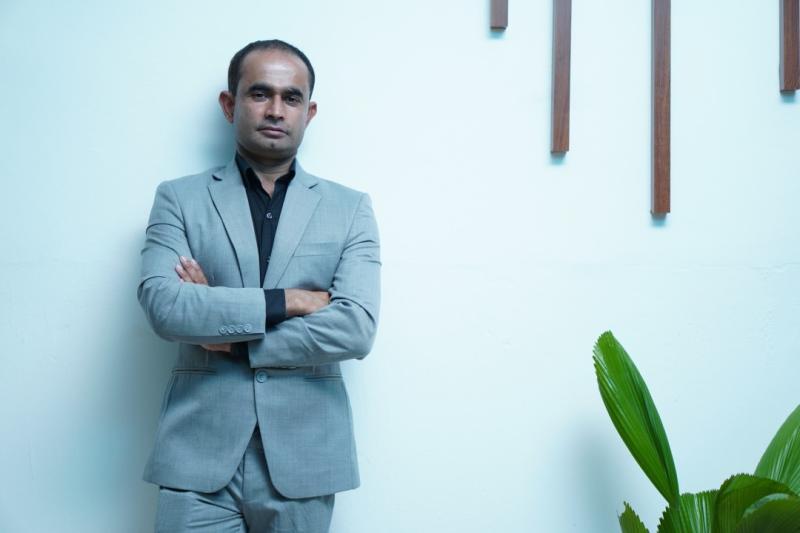Introduction: Big Change Starts with Simple Fixes
When most people think about innovation, they picture grand inventions or billion-dollar tech launches. But Sabeer Nelli, founder and CEO of Zil Money, believes that the most meaningful innovations start with small, persistent problems. Problems that affect everyday people. Problems that seem too ordinary to be worth solving — until someone like Sabeer solves them.
Before founding Zil Money, Sabeer was running a chain of gas stations. Not exactly the usual launchpad for a fintech company. But that’s what makes his story so powerful. He didn’t chase trends or copy others. He simply noticed the inefficiencies in his daily work and decided to fix them. And in doing so, he created a financial platform that now serves over a million users.
This article explores Sabeer’s approach to solving everyday problems and how you can apply his mindset to create meaningful impact in your own business or career.
Step 1: Identify the Problem You Experience Most
Great businesses don’t start with a flashy pitch. They start with a problem. For Sabeer, that problem was financial operations. Running Tyler Petroleum meant he had to deal with slow payments, paper checks, outdated payroll systems, and banks that didn’t move at the speed of business.
Rather than accept that frustration as normal, he saw it as a starting point. The first version of Zil Money wasn’t complex — it was a check-printing tool designed to eliminate delays. That tool soon evolved into a platform with ACH transfers, wire payments, and full payroll integration.
Action Step:
Think about your daily work. What task frustrates you the most? What system slows you down or wastes your time? That’s your signal. Solve it for yourself — then consider how to solve it for others.
Step 2: Build for Clarity, Not Complexity
Many startups fall into the trap of overbuilding. More features, more buttons, more options. Sabeer did the opposite. Zil Money’s goal is clear: make financial tools easy and accessible for business owners.
Whether it’s printing a check, scheduling payroll, or paying a vendor with a credit card, the platform is built around one thing — simplicity. Users don’t need to be tech-savvy or finance experts. They just need to log in and get things done.
Relatable Example:
Consider Maria, a local florist with three employees. Before Zil Money, she used multiple systems for invoices, payroll, and payments. It was overwhelming. After switching to Zil, she manages everything from one dashboard — and has more time to focus on her customers.
Action Step:
Look at your current product or service. Can a first-time user understand how it works in 60 seconds? If not, it’s time to simplify. Clarity always beats complexity.
Step 3: Focus on the Underserved
Sabeer didn’t build Zil Money for enterprise giants. He built it for small and medium-sized businesses (SMBs) — the entrepreneurs often ignored by big banks and software companies.
These business owners struggle with cash flow, limited tools, and high fees. By giving them access to flexible financial solutions (like credit card-to-check payments), Zil Money became a lifeline.
Action Step:
Who are the underserved customers in your market? What do they lack that you can provide affordably, reliably, and simply? Focus on that group, and you’ll build loyalty that marketing money can’t buy.
Step 4: Create Feedback Loops That Drive Growth
One of the keys to Zil Money’s success is its responsiveness. Sabeer didn’t build in isolation. He listened. Every feature — from mobile check delivery to payroll automation — was shaped by customer feedback.
This created a powerful cycle: users share needs, the platform evolves, and loyalty grows. In an age where people expect personalized solutions, that kind of responsiveness wins.
Action Step:
Start a simple feedback system. A short survey after purchases. A “What should we add?” box on your site. Then act on what you learn. Customers want to be heard — and they reward companies that listen.
Step 5: Lead with Purpose, Not Pressure
What drives Sabeer isn’t just profit — it’s purpose. His mission is to give small businesses the same financial advantages big companies enjoy. That clarity has guided his leadership, hiring, and product strategy.
When you build something that helps others succeed, your own success follows naturally. Zil Money didn’t grow because of aggressive ads. It grew because it solved real problems for real people.
Action Step:
Ask yourself: What’s the mission behind my business? If you removed money from the equation, would you still care about what you’re building? If yes, you’re on the right track.
Step 6: Don’t Chase Trends — Solve Timeless Problems
Sabeer didn’t jump on blockchain, crypto, or other hype trains. He focused on what every business needs: better ways to handle money.
Trends fade. Core problems remain. That’s why Zil Money continues to grow even as the tech landscape shifts.
Action Step:
Write down the top three frustrations your customers face today. Ask: Would these still matter five years from now? If the answer is yes, you’re working on something valuable.
Step 7: Keep It Human
In an age of automation, Sabeer never lost sight of the human element. Zil Money’s support team is available. The platform speaks in clear language, not finance jargon. And every update aims to make life easier, not more complicated.
This approach builds trust. People want technology that works — but they also want to feel seen and supported.
Action Step:
Review your customer journey. Where can you add more human connection — a friendly email, better help content, or faster support? The smallest touch can make the biggest difference.
Final Thoughts: Start With What You Know. Build What You Need.
Sabeer Nelli’s story isn’t flashy — and that’s what makes it so inspiring. He didn’t start with a huge team or a Silicon Valley pedigree. He started with a simple idea: financial systems should work for small businesses, not against them.
He built one tool. He made it better. He listened, improved, and stayed focused. And today, his platform empowers entrepreneurs around the world.
So if you’re looking for your next big idea, don’t look up — look around. What frustrates you? What’s broken? What can you fix?
Start there. Start small. And build something that helps people in a real, lasting way.
Because as Sabeer Nelli has shown us, big impact often starts with the simplest question: How can I make this better?




